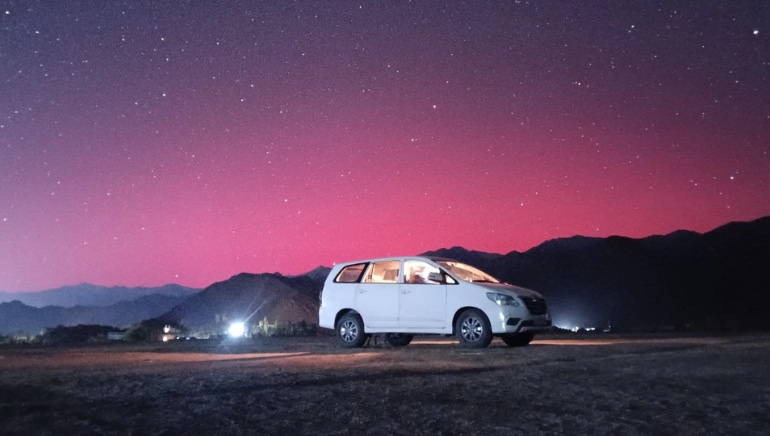Leh, Ladakh, saw auroras light up the night sky on Thursday after a strong geomagnetic storm hit Earth. Usually occurring at higher latitudes, this unusual phenomenon can be seen from India’s tallest observatory located near Hanle. However, observations at lower latitudes have been made possible by this year’s strong solar activity.
The Associated Press reported that comparable aurora displays were seen in Alabama and New Mexico. The “aurora borealis,” often known as the northern lights, are caused by coronal mass ejections mixing with atmospheric gases to produce colours: green and red from oxygen and blue and purple from nitrogen.
Indian Department of Science and Technology telescopes took images of red auroras in Leh. Originating from a solar flare on October 9 that was travelling at 1.5 million miles per hour, the geomagnetic storm was categorised by NOAA as G4, indicating extreme conditions that might potentially interfere with satellite operations and electrical grids.
Eleven-year cycles of maximum solar activity are predicted to occur, with the current cycle ending in 2025. It is possible that Earth will see more powerful solar storms and aurora sightings until 2026 due to this time of increased solar activity.















